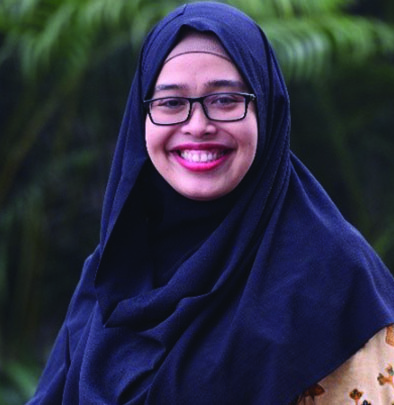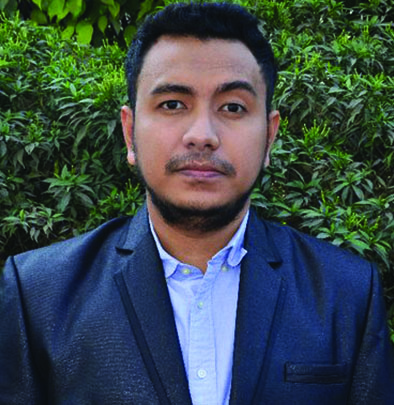Indonesia’s experiment with digitising food subsidy payments: The story so far
 by Astri Sri Sulastri, Alfa Pelupessy and TVS Ravi Kumar
by Astri Sri Sulastri, Alfa Pelupessy and TVS Ravi Kumar Jun 14, 2018
Jun 14, 2018 5 min
5 min
The note summarises key findings of the current scheme for social transfer of food subsidy (BPNT) in Indonesia
Background of government-to-people (G2P) payments in Indonesia
Indonesia has embarked on an ambitious programme to digitise all social assistance payments in the country by 2019. In 2017, one of the largest social assistance programmes, Raskin, was digitised and moved to cash transfers. The new, cash-based programme has been renamed Bantuan Pangan Non Tunai (BPNT). The programme piloted with 1.4 million beneficiaries in 44 cities. It will expand to 10 million beneficiaries across 72 cities in 2018.
The other programme that has been digitised is Program Keluarga Harapan (PKH), a conditional cash transfer scheme. PKH initially targeted 6 million beneficiaries in 2017. It would extend to 10 million beneficiaries in 2018. PKH has been designed to influence household incentives to participate in health and education. Under PKH, poor households receive annual payments of IDR 1.89 million (~USD 137) upon meeting certain conditions. These criteria include the attendance rate for pre-and post-natal check-ups in primary health centres by mothers, professionally assisted births, health checks for newborn children and toddlers, and school attendance records for children of school-going age.
The Ministry of Social Affairs (MoSA) implements both these programmes. The government has also been developing plans to digitise both fertiliser and LPG subsidies in the short to medium term. Estimates indicate that these programmes have 48 million and 25 million beneficiaries respectively.1 This note focusses on the BPNT programme. It summarises key findings of the operations assessment of the programme that MicroSave conducted for the Ministry of Social Affairs, Indonesia (MoSA).
The mechanism for delivery of social assistance transfers
The current scheme for social transfer of food subsidy (BPNT) has been designed to transfer the subsidy amount into the public sector bank accounts (basic savings accounts) of the scheme beneficiary. The beneficiary can then conduct transactions using the Kartu Keluarga Sejahtera (KKS) card – a debit card linked to the account. The account has sub-wallets dedicated to specific social transfer schemes. The subsidy amount for each scheme is transferred to these sub-wallets, which increases transparency for the beneficiary.
The BPNT subsidy of IDR 110,000 (~USD 7.8) per month is transferred to the beneficiary’s BPNT sub-wallet. Beneficiaries then visit designated e-warong retailers appointed by the participating banks and use the KKS card to purchase food. Under the new scheme, e-warongs can purchase specified food supplies, such as rice, egg, sugar, cooking oil, and flour from private suppliers as well as from the government food procurement and distribution agency (BULOG). This is a departure from the earlier Raskin programme, under which food was distributed through BULOG alone.
What are the key benefits of the programme?
Beneficiaries felt that the BPNT scheme has improved the quality of food items. Under Raskin, beneficiaries would receive rice from BULOG. Beneficiaries believed that this rice was of poor quality. Under BPNT, e-warongs can choose the supplier and buy locally preferred rice, which encourages beneficiaries to come to their shop. Among respondents, 89% mentioned that under the BPNT programme, they received rice that was better in quality.
In addition, BPNT beneficiaries now get more food when compared to Raskin. Under the Raskin programme, it was a general practice for representatives of village governments to distribute rice to all households in the village, even to those not entitled to receive the rice. This meant that each month, the genuine beneficiary households received much less than their share of 15 kilograms per household.
Under the BPNT programme, these leakages have been plugged largely as the money is now transferred directly to the designated beneficiary account. Of the respondents, 91% said that they could buy more food under the BPNT programme compared to the amount of food they would receive under Raskin.
Most of the e-warongs are highly satisfied with the BPNT programme, especially those who are regular grocery store owners and use their own private suppliers. These e-warongs feel that the BPNT programme has increased the footfall at their stores and has thus grown their monthly sales. Almost all the e-warongs interviewed mentioned that they wish to continue with the BPNT programme in the coming years.
What are the key challenges faced?
Although the overall satisfaction of the beneficiaries and e-warongs who exist under the BPNT programme remains high, some key operational challenges remain. We outline these challenges in the following section.
Remembering the PIN: Over 30% of the beneficiaries said that they had issues in remembering the PIN to make transactions. If they forget their PIN, they have to get a new PIN issued at the bank branch, which is both a hassle and expense for many. To avoid this, e-warong operators in a number of locations set the PIN for the beneficiaries. MicroSave found instances of all beneficiaries in a particular kelurahan (village) with the same PIN. This has serious implications for customer protection through a higher risk of fraud.
Reliability of technology: Among e-warongs, 69% reported that they have observed instances where the balances in the accounts of beneficiaries were updated incorrectly even after a transfer from the bank was completed. This suggests that the technology used by the four participating banks is still not completely reliable. If left unresolved, customer satisfaction risks being compromised.
Tracking the purchases done at the e-warong: Neither MoSA nor the banks are able to track the nature of purchases made by beneficiaries at e-warongs. An ability to track could have otherwise ensured that the beneficiaries spend the subsidy on the specified items, such as rice and eggs. E-warongs can therefore theoretically sell any item that they stock to the beneficiaries and the government or implementing agencies would not be able to detect this. In 2017, 17% of the beneficiaries mentioned that they bought non-specified items. As the programme scales, the challenge for MoSA and the participating banks would be to introduce cost-effective and scalable solutions to track the purchases at the front-end.
Limited banks involved in the BPNT program: At present, only the four government-owned banks (BRI, Bank Mandiri, BNI, and BTN) are allowed to participate in the programme. With the exception of Bank Rakyat Indonesia (BRI), other government banks have a limited presence in many of the geographies. BRI is the largest Indonesian bank with a wide outreach through its units and branchless banking (Laku Pandai) agents. Opening the programme to certain other banks or e-money retailers could make it more sustainable in the long run. This is because the banks may have wider branchless banking networks, while the e-money issuers may have a widespread retail presence.
In conclusion, the digitisation of the BPNT programme sets the pattern for all other social assistance programmes in Indonesia. MicroSave’s evaluation indicates that as of date, there is a high level of satisfaction among the beneficiaries and e-warongs with the programme. However, for a more sustainable scale-up, the government should prioritise the following:
- Working on constraints to create more convenient payment technologies for the poor;
- Better monitoring of the scheme at the level of the e-warong;
- Involving other banks and e-money issuers.
BPNT not only brings efficiency to one of Indonesia’s largest social assistance programmes. It also offers a promising solution to accelerate financial inclusion by compelling a large number of unbanked households to open and use bank accounts. Ensuring its success should be the focus for all stakeholders involved in financial inclusion across Indonesia.
[1]https://www.indonesia-investments.com/culture/economy/general-economic-outline/agriculture/item378
http://www.iisd.org/gsi/news/jakarta-lpg-dialogue



Leave comments